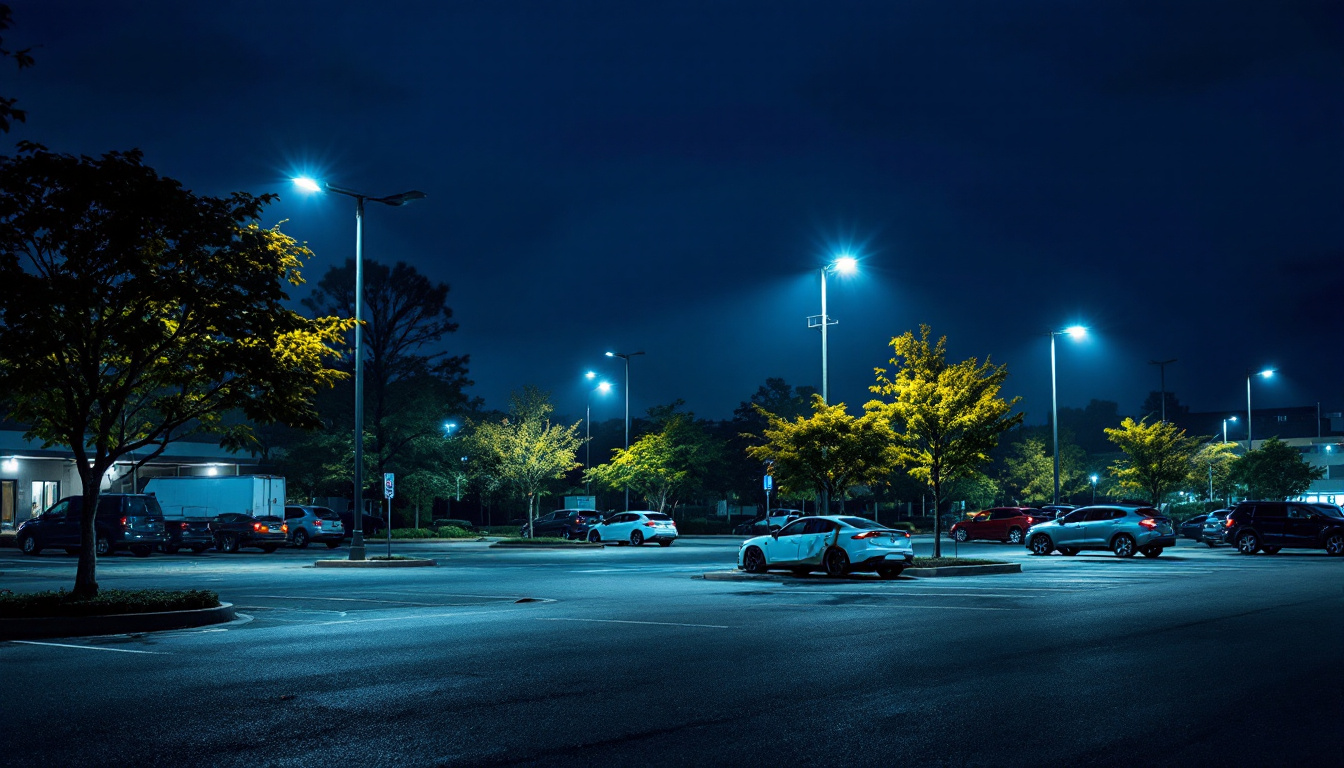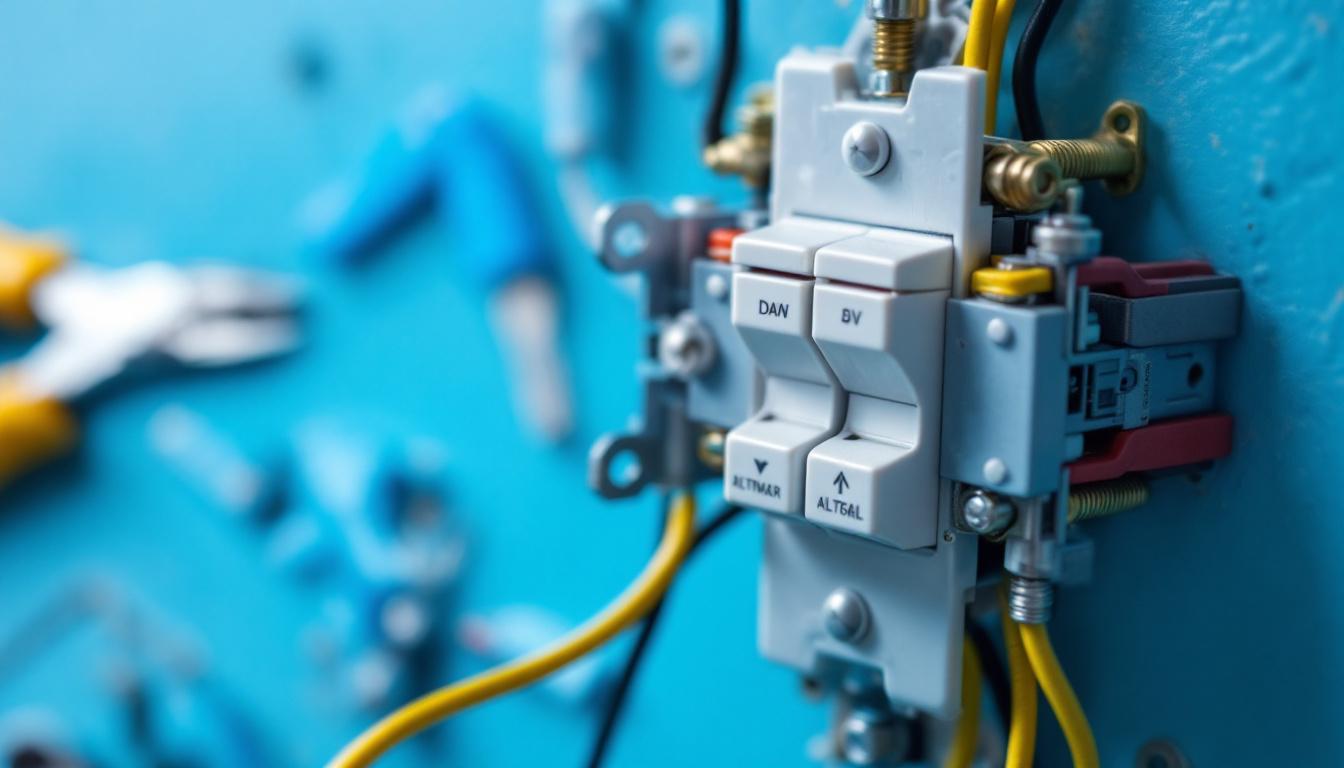
As a lighting contractor, understanding the components of parking lot lighting is crucial for successful installations and maintenance. One of the most fundamental elements is the pole that supports the lighting fixtures. This article will delve into the terminology, types, and considerations surrounding parking lot poles, ensuring that contractors can navigate this essential aspect of their work with confidence.
In the realm of parking lot lighting, the pole is often referred to simply as a “light pole” or “lighting pole.” These structures serve as the backbone of outdoor illumination, providing the necessary height and stability for effective light distribution. The design and material of these poles can significantly influence the overall performance and aesthetics of a parking lot. Additionally, the choice of light pole can impact energy efficiency and maintenance costs, making it a crucial decision for property owners and managers.
Light poles come in various types, each designed for specific applications and environments. The most common types include:
The height of the light pole is a critical factor in achieving optimal lighting levels in a parking lot. Typically, poles range from 10 to 30 feet tall, depending on the layout and size of the parking area. A taller pole can provide a wider spread of light, reducing shadows and enhancing safety for drivers and pedestrians alike. Moreover, the height can also influence the direction of the light, which is essential for minimizing glare and ensuring that the light is directed where it is most needed.
However, it’s essential to balance height with light distribution. Too tall a pole may create dark spots, while too short a pole may not provide adequate coverage. Conducting a lighting design analysis can help determine the ideal height for each specific project. This analysis often includes considerations for the type of fixtures used, the wattage of the bulbs, and the overall layout of the parking lot, ensuring that all areas are well-lit and safe for use. Additionally, advancements in LED technology have allowed for greater flexibility in pole height and fixture placement, as these lights provide higher lumen output with lower energy consumption.
When selecting a light pole for a parking lot, several factors should be taken into account. These considerations can affect not only the performance of the lighting system but also the overall safety and aesthetics of the area.
The material of the light pole plays a significant role in its longevity and maintenance requirements. Steel poles, while strong, may require periodic painting or galvanization to prevent rust. Aluminum poles, on the other hand, typically require less maintenance due to their natural resistance to corrosion.
Fiberglass poles are an excellent choice for coastal areas or environments with high humidity, as they are impervious to rust and corrosion. However, they may not be as robust as steel or aluminum poles, so it’s essential to evaluate the specific needs of the location. Moreover, the choice of material can also influence the pole’s weight and ease of installation, which are critical factors for contractors working in challenging environments.
The design of the light pole can significantly impact the overall look of the parking lot. A well-designed pole can enhance the visual appeal of the area, contributing to a positive experience for users. Options range from sleek, modern designs to more traditional styles, allowing contractors to choose a pole that aligns with the overall architectural theme of the surrounding structures.
Additionally, decorative poles can be fitted with various lighting fixtures, enabling customization to meet specific lighting requirements while maintaining aesthetic integrity. Some poles even offer integrated features such as banners or signage, which can further enhance branding opportunities for businesses located in the vicinity. The choice of color and finish can also play a vital role in how well the pole blends with its environment, making it essential to consider the surrounding landscape and infrastructure.
Proper installation is crucial for the longevity and performance of light poles. Contractors must ensure that the poles are securely anchored and positioned to provide optimal lighting coverage. This often involves assessing soil conditions, local regulations, and potential obstacles in the vicinity.
Regular maintenance is also essential to ensure the poles remain functional and visually appealing. This includes checking for signs of wear, corrosion, or damage and addressing issues promptly to avoid costly repairs down the line. Additionally, the frequency of maintenance can vary based on the pole’s location; for instance, poles in urban areas may experience more wear and tear due to pollution and vandalism compared to those in quieter, suburban settings. Implementing a proactive maintenance schedule can help extend the life of the light poles and ensure consistent performance, ultimately enhancing safety and security in the parking lot.
Even experienced lighting contractors can encounter pitfalls when working with parking lot poles. Being aware of these common mistakes can help ensure a smooth installation process and a successful lighting project.
One of the most significant pitfalls is underestimating the lighting needs of a parking lot. Insufficient lighting can lead to safety concerns, increased liability, and a negative user experience. Conducting a thorough lighting analysis before installation can help determine the appropriate number of poles and their placement.
It’s also essential to consider the type of lighting fixtures being used. LED lights, for example, provide higher lumens per watt, allowing for better illumination with fewer fixtures. Understanding the relationship between pole height, fixture type, and spacing can help optimize lighting performance.
Every municipality has specific regulations regarding outdoor lighting, including height restrictions, light pollution guidelines, and energy efficiency standards. Failing to adhere to these regulations can result in fines, project delays, or the need for costly modifications.
Before commencing any project, it is vital to research local codes and obtain the necessary permits. Engaging with local authorities early in the process can help ensure compliance and streamline the installation process.
Environmental factors play a crucial role in the selection and installation of light poles. Wind loads, snow loads, and seismic activity can all impact the stability and durability of the poles. Contractors must consider these factors during the design phase to ensure that the poles can withstand local weather conditions.
Additionally, the surrounding environment, such as nearby trees or buildings, can affect light distribution and pole placement. Conducting a site analysis can help identify potential obstacles and inform the design process.
Implementing best practices during the installation of parking lot lighting can enhance the overall effectiveness and longevity of the system. Here are some key recommendations for lighting contractors:
A thorough site assessment is essential for determining the optimal placement of light poles. This includes evaluating the size of the parking lot, existing infrastructure, and potential obstacles that may impact light distribution.
During the assessment, consider factors such as traffic patterns, pedestrian walkways, and the location of buildings or trees that may cast shadows. This information will help inform the design and ensure that all areas receive adequate illumination.
Advanced lighting design software can greatly enhance the planning process. These tools allow contractors to simulate different lighting scenarios, assess light levels, and visualize the impact of various pole heights and fixture types.
By utilizing such software, contractors can make informed decisions that optimize lighting performance and enhance safety in the parking lot.
As technology continues to evolve, planning for future upgrades is essential. This may include incorporating smart lighting systems that can adjust based on occupancy or integrating energy-efficient solutions that reduce operational costs.
Designing the installation with future upgrades in mind can save time and resources, ensuring that the lighting system remains relevant and efficient for years to come.
Understanding the intricacies of parking lot poles is vital for lighting contractors aiming to deliver high-quality installations. By grasping the types of poles available, considering essential factors, and avoiding common pitfalls, contractors can enhance their projects’ success. Implementing best practices and staying informed about industry trends will further ensure that parking lot lighting systems are safe, efficient, and aesthetically pleasing.
As the demand for effective outdoor lighting continues to grow, staying ahead of the curve in knowledge and execution will position contractors as leaders in the field. With careful planning and attention to detail, the lighting needs of any parking lot can be met with excellence.
Ready to elevate your lighting installations with the best in the business? Look no further than LumenWholesale for all your parking lot lighting needs. Our commitment to quality and affordability ensures that you have access to the highest standard of spec-grade lighting products at wholesale prices that simply can’t be beaten. Say goodbye to middleman markups and hello to a seamless bulk buying experience, complete with free shipping. Don’t compromise on quality or cost—choose LumenWholesale for reliable, high-performance lighting that meets your project’s every demand. Wholesale Lighting at the Best Value is just a click away. Make the smart choice and partner with us today for lighting solutions that truly shine.

Discover the secrets to maximizing efficiency with 4000K lighting.

Discover the essential compliance guidelines for illuminated exit signs and what lighting contractors must understand to ensure safety and legality.

Unlock the secrets of three-way switch terminals with our comprehensive guide tailored for lighting contractors.

Discover how Lighting Behavior Services can revolutionize your contracting business.